Even though most of us are familiar with the iconic installations of Christo and Jeanne-Claude, who would have guessed that a specialist company based in Northern Germany and its Zund Cutter played such an important part in many of their recent projects.
If everything goes to plan, the world is set to be amazed once again by the stunning beauty of carefully crafted, floating textile panels. Between September 18 and October 3, 2021 "L'Arc de Triomphe, Wrapped" will be unveiled at the heart of Paris. The project had to be postponed for twelve months due to the pandemic, which gave Robert Meyknecht and his small, specialist team an unexpectedly long deadline for the careful preparation of the Christo and Jeanne-Claude project at Place de l'Etoile - Charles de Gaulle.
Some delay but the dream will come true
"Following Christo's death in New York on May 31, 2020, we were unsure as to whether the entire project would have to be cancelled," Meyknecht recalled. "But because so many drawings and details had been completed already and were ready for use, Christo's estate decided to go ahead."
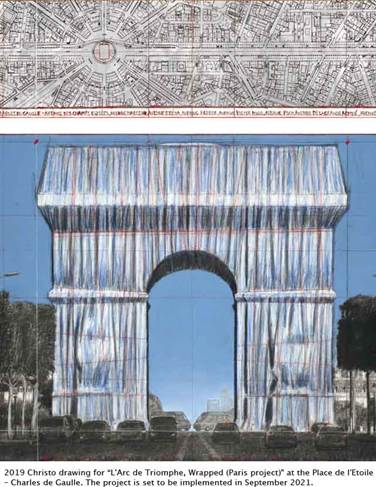
Robert Meyknecht is the owner of 'geo - Die Luftwerker Robert Meyknecht e.K.', a Lubeck-based company tasked with cutting and mounting the large panels required to wrap the iconic building, using a Zund Cutter G3 3XL-3200. "We export highly complex patterns from a specialist software to create curved 3D structures," Meyknecht explained. He continued: "The Zund cutter can work along cutting lines on even exceptionally long panels with stunning accuracy. The machine has saved us a huge amount of time and trouble since we bought it in 2013. To achieve maximum impact Christo and Jeanne-Claude projects need be installed very quickly, almost as if they suddenly appeared out of thin air. Obviously, there is no room for error. We are pleased that our Zund cutter helps us to achieve the precision we need to make this happen."
Special fabrics
He continued: "Very special fabrics are chosen for Christo and Jeanne-Claude projects, which is why we use a Driven Rotary Tool (DRT) to cut the textile. The Paris project will involve light blue polypropylene coated with a precisely applied, thin layer of aluminum which will give the wrapped building an airy, unique look, especially when the sunlight catches it."
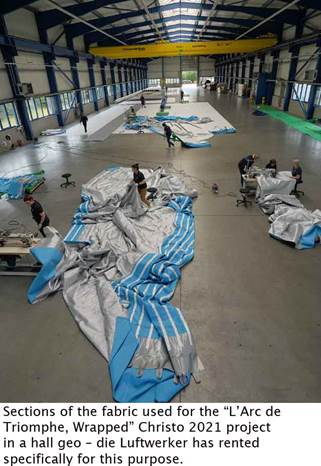
Balloon construction and the Holstentor
"When we were looking for a cutting table, I obviously also considered the competition," the CEO recalled. "However, when I visited Zund Systemtechnik AG at its Altstatten headquarters, it immediately became clear that we were going to opt for a Zund machine. They have so much experience with cutting all kinds of fabrics and other materials, I knew they would be able to supply exactly what we needed." Along with the DRT, he also invested in a universal cutting tool for PVC and coated materials. "We are renowned for our finishing and sewing expertise on complicated textile projects," he added. "We consequently get to work on many high profile commercial wide format printing projects, in which we usually handle the background engineering and finishing work. We even helped to model a faux mesh facade for Lubeck's landmark Holstentor gate when the building, which dates back to 1500, was restored in 2005/06," he fondly recalled.
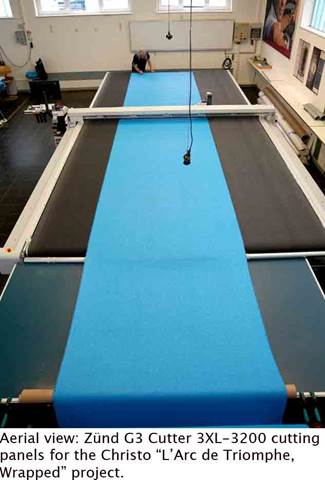
Ultrasonic welder and belt cutter
"Our facilities also include a large ultrasonic welder and ultrasonic belt cutter and, obviously, industrial sewing machines. More importantly, our highly skilled workforce can tackle even highly complex patterns with remarkable accuracy," he added. "When I decided to follow my dream and establish an aviation company in 1994, our main customer base consisted of commercial air shippers and balloonists. Not surprisingly, errors have to be avoided at all cost in the aviation industry as they would quite likely result in loss of life."
The company, which employs approximately 20 full-time employees, currently has a huge aviation department where new balloons are constructed, and existing gear is repaired and tested. "We use our Zund cutting table for these kinds of projects also," Meyknecht explained. "A lot of what we do involves manual work and one-offs though, which means that our cutting table doesn't really require further automation."
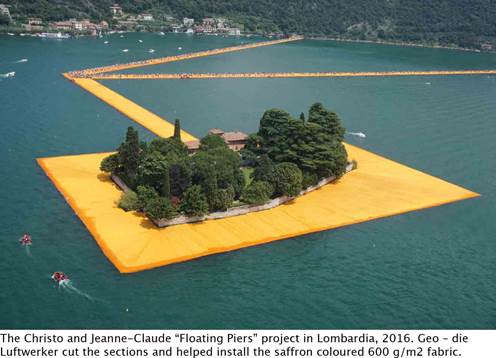
How the Zund G3 Cutter 3XL-3200 became a tool for art
Even with this kind of expertise, it appears rather unusual that an international artist such as Christo would be aware of a small company based in Northern Germany. It was all the result of coincidence. Gasometer Oberhausen, an exhibition space with a ceiling that is more than 100 m high, is known for spectacular exhibitions. Geo - die Luftwerker had worked with them on several occasions after they provided an air-filled model of the moon, with a 25 m diameter, for the 2009/10 "Sternstunden - Wunder des Sonnensystems" exhibition.
When Christo's "Big Air Package" project, a 94 m high indoor sculpture created from fabric and light, had to be realised in Oberhausen in 2013, the curator and long-time Christo photographer, Wolfgang Volz, contacted Meyknecht. Not only did the Lubeck company help to turn the project into a huge success with more than 440,000 visitors, Meyknecht and Volz also continued their successful cooperation. "From then on, we became part of Christo and Jeanne-Claude's universe and supported them with their projects," the owner fondly recalled. "Working on such spectacular arts projects with a global high-profile audience is quite different from an aviation or commercial wide format project. However, the main requirements are quite similar, as absolute precision and lots of technical know-how are a must."
Floating Piers
For the "Floating Piers" project geo - die Luftwerker even made it possible for a crowd of 1.2 million people to literally walk on water. The 2016 Christo and Jeanne-Claude project, a saffron coloured walkway between Sulzano and Monto Isola on Lake Iseo in Lombardia (Italy) only ran for 16 days. "We also assisted with 3D measurement and installation," Meyknecht explained. "As the final touches of the installation could only take 8 hours, everything had to be pre-fabricated to the highest standards. Logistics alone were an absolute nightmare, because obviously all the heavy-duty fabric sections looked exactly the same but needed to be in the right location at a given time to ensure that the very tight schedule could be met." Needless to say, Meyknecht and his team succeeded despite an unexpected late afternoon thunderstorm. "Just to be on the safe side, we had everything in place to re-cut and re-sew on location. Not the Zund cutting table though," he smiled. "We plan to keep it on our premises for a very long time. (Text: Sonja Angerer, Images: Wolfgang Volz)



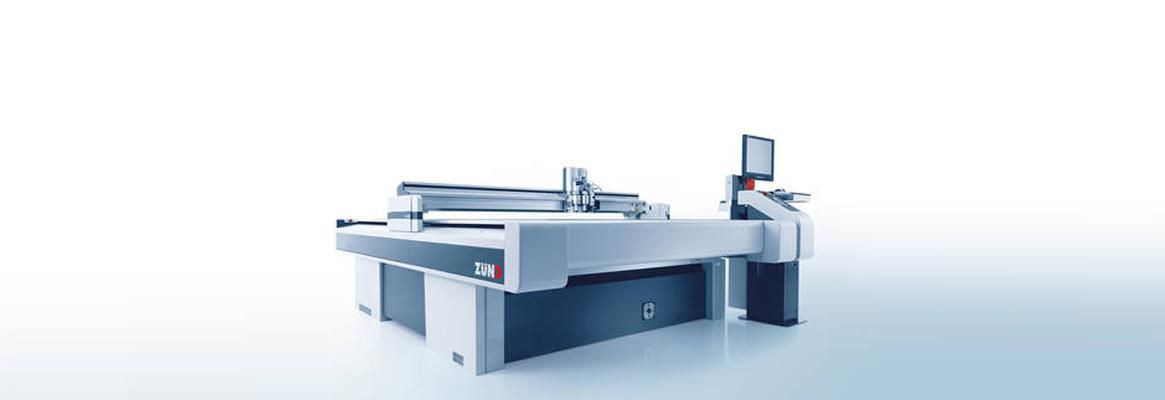



Comments